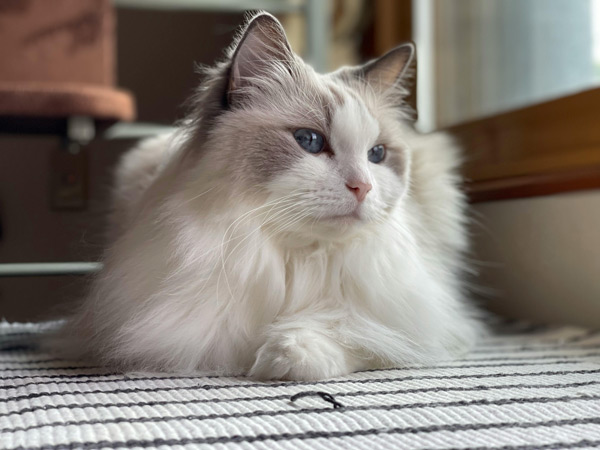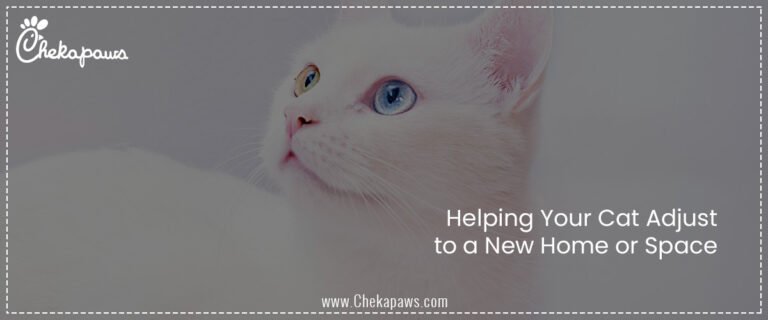Being a pet parent One of the most recognizable and charming behaviors that domestic cats display is purring. That gentle, rhythmic sound is frequently interpreted as a sign of contentment, whether your cat is kneading your favorite blanket or cuddled up on your lap—or is it? Although purring is often associated with contentment, the reality is far more nuanced. There are many other reasons why cats purr besides just being happy.
Table of Contents

The Mechanics of Purring
How Do Cats Purr?
For decades, scientists have been fascinated by the precise mechanism of purring. Even though research is still being done, the following is what is currently known:
- Neural oscillators: The laryngeal (voice box) muscles receive repeated neural signals from the brain.
- Glottis Movement: The glottis, the gap between the vocal cords, is quickly opened and closed by these muscles, which twitch between 25 and 150 vibrations per second.
- Air Movement: The purring sound is produced by air touching these vibrating muscles as the cat breaths in and out.
Is It Voluntary or Involuntary?
Although purring is strongly linked to natural behaviors like nursing, grooming, and pain management, cats appear to be able to suppress it at will. Therefore, even while it could appear to be voluntary, it is frequently an emotionally motivated and reflexive movement.
The Evolution of Purring
Why Did Purring Evolve?
Purring most likely developed as a self-soothing and communication mechanism. Here are a few theories:
- Mother-Kitten Bonding: Although they are deaf and blind at birth, kittens are able to sense vibrations. As early as two days old, they start purring while nursing to express their sense of security and to strengthen their relationship with their mother.
- Non-Aggressive Communication: Purring lets other cats and animals know that you intend to be peaceful.
- Healing and Recovery: Purring at a frequency of 25–100 Hz has been associated with soft tissue and bone healing, providing evolutionary advantages for the healing process following an injury.
Do Wild Cats Purr?
Both yes and no. Some wild cats, such as bobcats and cheetahs, and the majority of domestic cats (Felis catus) purr. However, because of changes in the anatomy of their larynxes, enormous wild cats like tigers and lions are unable to create the same continuous purring sound. When they exhale, they do make sounds that are similar, but they are not purring.
Emotional Reasons Cats Purr
Being happy and Calm
The most well-known explanation is happiness. When cats are comfortable, relaxed, and happy, they purr. This may be heard when
- In your lap, they are snuggled up.
- Being touched or caressed lightly
- Taking a nap in a warm, bright area
Affection and Bonding
Cats purr to improve their relationship with other animals or their owners. It’s a component of a trust-based exchange.
- Purring and headbutting are powerful displays of affection.
- Purring and Sleeping Close to You: Shows they feel secure and connected.
Getting Food or Attention
Some cats are trained to purr in a manner that resembles the frequency of a crying infant, which is a sound that people are conditioned to hear. Known as the “solicitation purr,” this sound is frequently heard during feeding time.
Physical Reasons for Purring
Pain Management and Healing
The fact that purring is linked to pain is among the more unexpected facts about it.
- Self-Soothing: When in discomfort, cats may purr to soothe themselves.
- Mending Frequencies: To aid with recuperation, vibrations in the 25–100 Hz range encourage bone and tissue mending.
Stress Relief
A cat’s way of reducing stress is to purr. Perhaps you’ll hear a cat purring
- When visiting a veterinarian
- When recuperating from an injury
- When avoiding a loud sound
Contrary as it may seem, cats occasionally purr to console themselves when they are upset.
Regulation of Sleep
Cats who purr may have an easier time falling asleep and staying in a relaxed mood. Like white noise for people, the repetitive vibration can help people relax.
Developmental and Social Purring
Communication between a Kitten and its Mother – When nursing, newborn cats start purring. This informs the mother that they are receiving milk and are doing well. The communication loop is reinforced when the mother purrs back.
Social Foundations
- Purring can be used as a social appeasing tactic in cat colonies or multi-cat homes
- Non-aggression may be shown by submissive purring.
- Purring can be used by dominant cats to calm or manage a group of people.
Understanding Purring in Different Situations
Context is important
- Purring and a cat’s body language might be used to interpret its intentions:
- Eyes closed, kneading paws, and forward ears equal content.
- Distress is equal to hiding + tucked tail + high-pitched purr.
Purring and Illness
A purring cat does not necessarily indicate good health. They purr occasionally when
- They are giving birth.
- They suffer from a chronic ailment.
- They are soothing themselves as the end of the time.
Older Cats and Purring – For comfort, older cats may purr more often, particularly if they have arthritis or cognitive decline.
Purring vs. Other Sounds
Purring as opposed to growling or screaming, Recognizing the difference between the two
- Growling: A low, persistent warning sound.
- Trilling: A greeting that uses a rolling “r.”
- Purring is the rhythmic, continuous vibration of the chest and throat.
- You risk misjudging your cat’s mood if you confuse these.
Reactions of Humans to Purring
Why Do People Adore It?
Humans are also impacted by a cat’s calming purr.
- Reduces Stress: Decreases Cortisol
- Encourages Healing: Could raise blood pressure and heart rate
- Increases Bonding: Causes the production of the bonding hormone, oxytocin
- In emotional support settings, some therapy animals use their purrs to help patients who are depressed, anxious, or suffering from PTSD.
Myths and misconceptions about purring
Common Myths
Myth – Cats only purr when they’re happy
Fact – In addition, they purr when they are frightened, ill, or in pain.
Myth – A healthy cat purrs loudly.
Fact – Quiet purring is not a sign of illness; loudness varies.
Myth – Every cat purrs
Fact – Some cats hardly ever purr or don’t purr at all.
The Real Story of Quiet Purrers
Some cats may silently vibrate their chest and neck. These cats may purr primarily when they are sleeping or in close proximity.
Promoting Positive Purring Behavior
Ways to Increase Your Cat’s Purr
- Create a Secure Environment: A stress-free environment promotes rest.
- Gently brushing and petting: particularly around the neck, chin, and cheeks.
- Interactive Play: Fosters connection and trust.
- Warmth and Soft Bedding: Cats adore comfortable spots to relax and purr.
When to Be Concerned
Signs to Keep an Eye on When Purring, See a veterinarian if your cat is purring along with these symptoms:
- Laziness
- Lack of appetite
- Behaviour concealment
- Breathing difficulties
- Favoring or limping a limb
Conclusion
Cat purring is a wonderful, complex behavior that goes beyond just enjoyment. It is a tool for connection, communication, emotional control, and healing. Knowing the subtleties of cats’ purring enables you to interact with your feline companion more effectively and attend to their physical and emotional requirements.
Listening to your cat purr instead of just hearing it can lead to a deeper bond based on mutual comfort, empathy, and observation. You are a part of something old, personal, and scientifically amazing, so smile the next time your cat fires up that soft engine.







